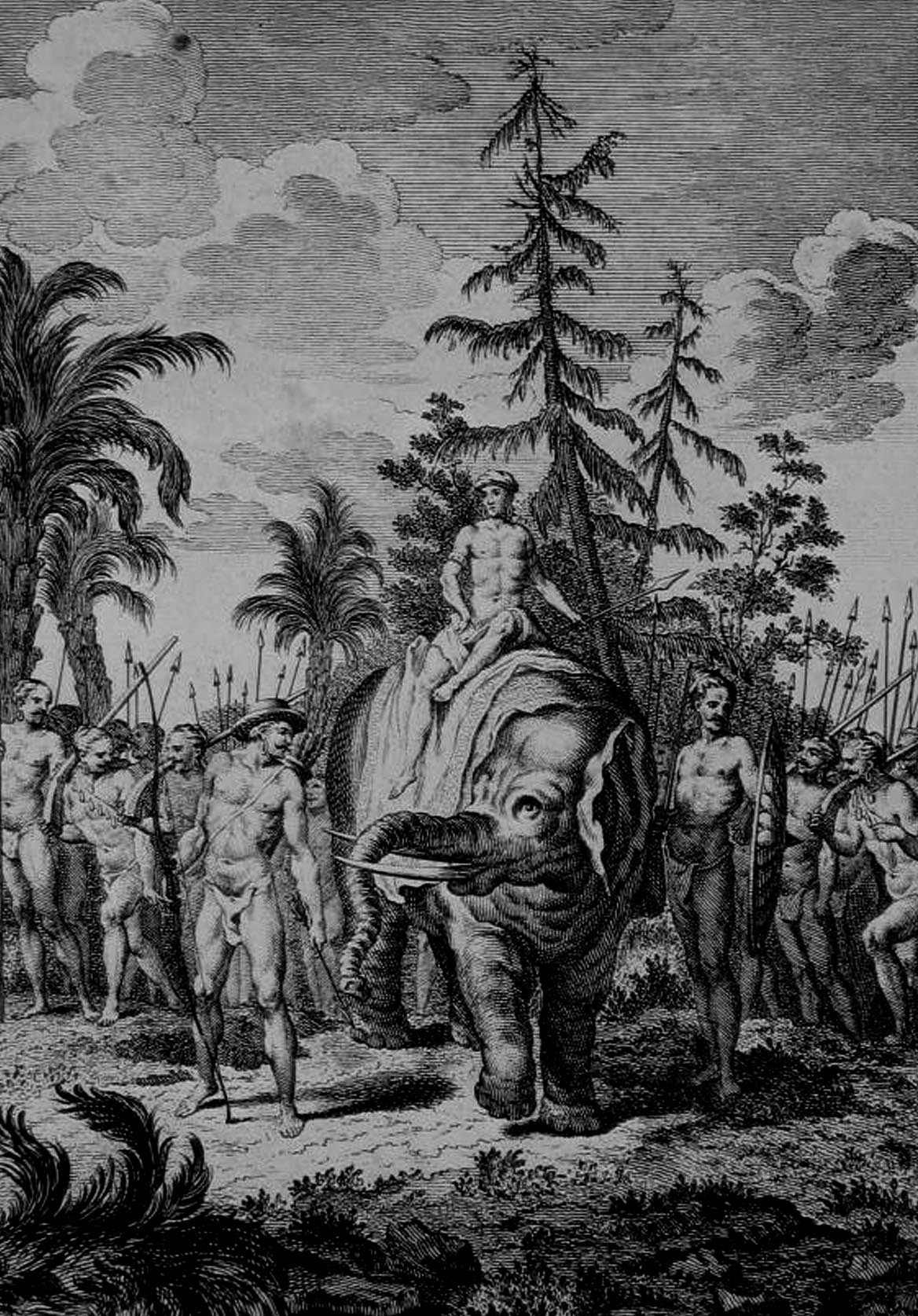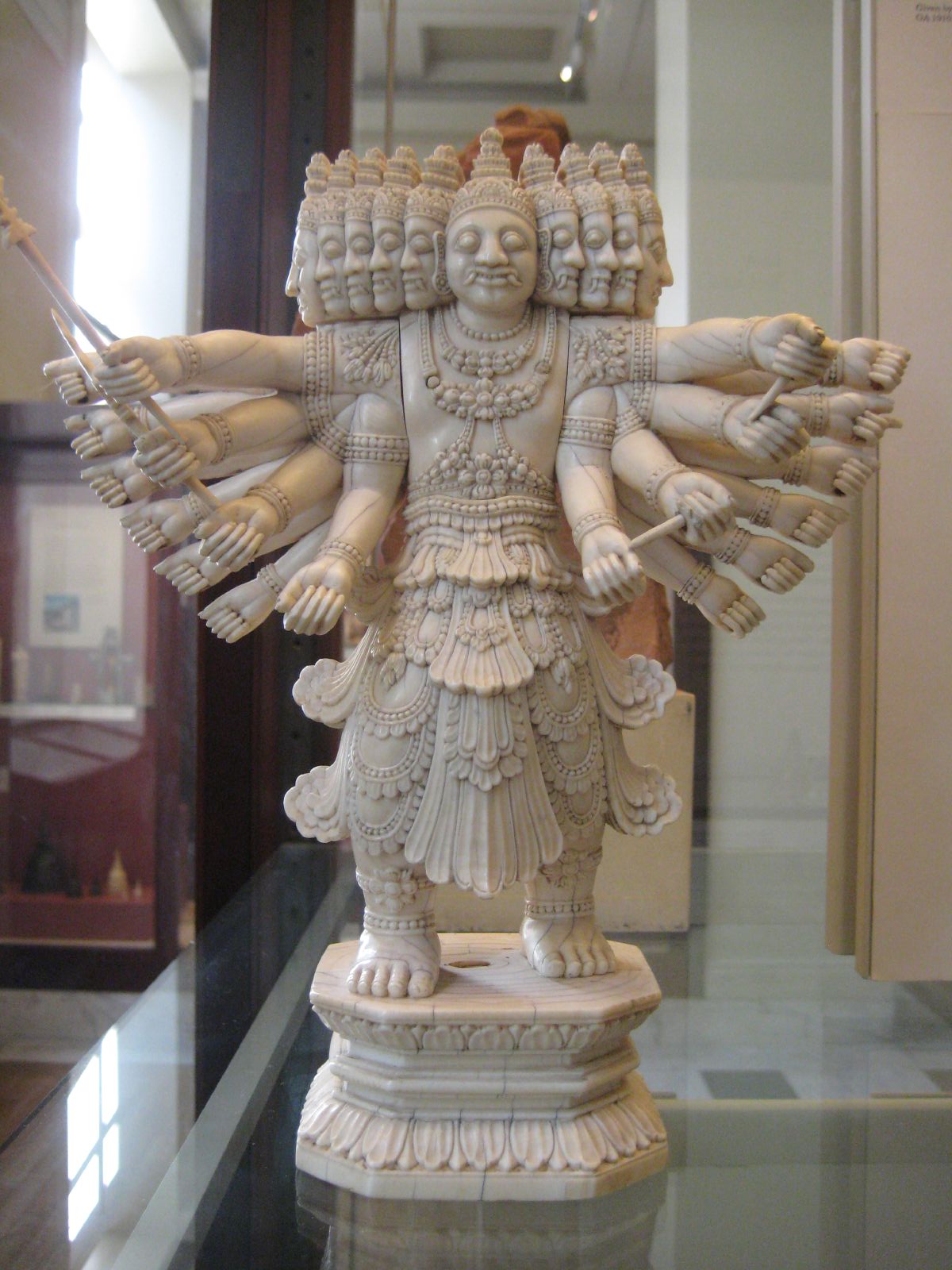|
Thoniyakavu Bhadrakali Temple
The Thoniyakavu Temple is an ancient Hindu temple dedicated to the Goddess Bhadrakali, located in the village of Puthenpeedika in Kerala state, India. The temple is a classic example of the architectural style of Kerala. The temple participates in pooram at the Arattupuzha Pooram festival, which is held at the Arattupuzha Temple in the Thrissur District. The Pooram, also known as "Devamela," which means "a conglomeration of gods," has a massive attendance of deities from neighbourhood shrines. The Thoniyakavu temple has other deities: Vigneswara (ganapathi), Veerabadran, and Kandakarnan, who are placed in sub-shrines, as well as a shrine for the Rakshasas. This temple's deity is believed to be the sister deity of Thiruvanikavu Temple, situated near Peringottukara. Etymology Initially, the temple was built near the Thiruvanikavuu Temple. However, after the devaprasnam, Bhagavathi—the deity to whom the temple is dedicated—showed the new temple's location, which is a ... [...More Info...] [...Related Items...] OR: [Wikipedia] [Google] [Baidu] |
India
India, officially the Republic of India (Hindi: ), is a country in South Asia. It is the seventh-largest country by area, the second-most populous country, and the most populous democracy in the world. Bounded by the Indian Ocean on the south, the Arabian Sea on the southwest, and the Bay of Bengal on the southeast, it shares land borders with Pakistan to the west; China, Nepal, and Bhutan to the north; and Bangladesh and Myanmar to the east. In the Indian Ocean, India is in the vicinity of Sri Lanka and the Maldives; its Andaman and Nicobar Islands share a maritime border with Thailand, Myanmar, and Indonesia. Modern humans arrived on the Indian subcontinent from Africa no later than 55,000 years ago., "Y-Chromosome and Mt-DNA data support the colonization of South Asia by modern humans originating in Africa. ... Coalescence dates for most non-European populations average to between 73–55 ka.", "Modern human beings—''Homo sapiens''—originated in Africa. Then, int ... [...More Info...] [...Related Items...] OR: [Wikipedia] [Google] [Baidu] |
Nair
The Nair , also known as Nayar, are a group of Indian Hindu castes, described by anthropologist Kathleen Gough as "not a unitary group but a named category of castes". The Nair include several castes and many subdivisions, not all of whom historically bore the name 'Nair'. Fuller (1975) p. 309 These people lived, and continue to live, in the area which is now the Indian state of Kerala. Their internal caste behaviours and systems are markedly different between the people in the northern and southern sections of the area, although there is not very much reliable information on those inhabiting the north. Fuller (1975) p. 284 Historically, Nairs lived in large family units called ''tharavads'' that housed descendants of one common female ancestor. These family units along with their unusual marriage customs, which are no longer practiced, have been much studied. Although the detail varied from one region to the next, the main points of interest to researchers of Nair marriage custo ... [...More Info...] [...Related Items...] OR: [Wikipedia] [Google] [Baidu] |
Kumbham
The Malayalam Calendar is a sidereal solar calendar used in Kerala. The origin of the calendar has been dated to 825 CE, the beginning of the Kollam Era. There are many theories regarding the origin of the era, but according to recent scholarship, it commemorated the foundation of Kollam after the liberation of the southern Chera kingdom (known as Venadu) from the Chola dynasty's rule by or with the assistance of the Chera emperor at Kodungallur. The origin of the Kollam Era has been dated to 825 CE, at the end of the three year-long great convention in Kollam held at the behest of the Venadu King Kulasekharan. Scholars from west and east were present in the convention, and the Thamizh Kanakku (Calendar) was adopted. Kollam was the capital of Venadu and an important port town of the Chera Kingdom in that period. Kollam Aandu was adapted in the entire Chera Kingdom (the current day states of Tamil Nadu, Karnataka and Kerala), the majority of which is now in Kerala. In Malay ... [...More Info...] [...Related Items...] OR: [Wikipedia] [Google] [Baidu] |
Cochin Devaswom Board
Cochin Devaswom Board is a socio-religious trust appointed by the Kerala Government to look after Hindu temples in central Kerala consisting of Ernakulam District, Thrissur District and Palakkad District. It is headquartered in Round north, Thrissur. History The Cochin Devaswom Board was formed on 1 July 1949 in Thrissur city. The Travancore – Cochin Religious Institutions Act 1950 governs Cochin Devaswom Board. Cochin Devaswom Board is ruled by a managing committee consisting of three members. The managing committee or board consists of three Hindu members. The Kerala Cabinet can nominate two persons in which Hindu members in the Cabinet Cabinet or The Cabinet may refer to: Furniture * Cabinetry, a box-shaped piece of furniture with doors and/or drawers * Display cabinet, a piece of furniture with one or more transparent glass sheets or transparent polycarbonate sheets * Filing ... can nominate one person. Kerala Legislative Assembly can nominate one person. According to ... [...More Info...] [...Related Items...] OR: [Wikipedia] [Google] [Baidu] |
Malabar Coast
The Malabar Coast is the southwestern coast of the Indian subcontinent. Geographically, it comprises the wettest regions of southern India, as the Western Ghats intercept the moisture-laden monsoon rains, especially on their westward-facing mountain slopes. The term is used to refer to the entire Indian coast from the western coast of Konkan to the tip of India at Kanyakumari. The peak of Anamudi, which is also the point of highest altitude in India outside the Himalayas, and Kuttanad, which is the point of least elevation in India, lie on the Malabar Coast. Kuttanad, also known as ''The Rice Bowl of Kerala'', has the lowest altitude in India, and is also one of the few places in the world where cultivation takes place below sea level. The region parallel to the Malabar Coast gently slopes from the eastern highland of Western Ghats ranges to the western coastal lowland. The moisture-laden winds of the Southwest monsoon, on reaching the southernmost point of the Indian Pe ... [...More Info...] [...Related Items...] OR: [Wikipedia] [Google] [Baidu] |
Sacred Groves Of India
Sacred groves of India are forest fragments of varying sizes, which are communally protected, and which usually have a significant religious connotation for the protecting community. Hunting and logging are usually strictly prohibited within these patches. Other forms of forest usage like honey collection and deadwood collection are sometimes allowed on a sustainable basis. NGOs work with local villagers to protect such groves. Traditionally, and in some cases even today, members of the community take turns to protect the grove. The introduction of the protected area category community reserves under the Wild Life (Protection) Amendment Act, 2002 has introduced legislation for providing government protection to community held lands, which could include sacred groves. Around 14,000 sacred groves have been reported from all over India, which act as reservoirs of rare fauna, and more often rare flora, amid rural and even urban settings. Experts believe that the total number of s ... [...More Info...] [...Related Items...] OR: [Wikipedia] [Google] [Baidu] |
Bhagavati
Bhagavatī (Devanagari: भगवती, IAST: Bhagavatī), is a Hindus, Hindu epithet of Sanskrit origin, used as an honorific title for female deities in Hinduism. It is primarily used to address one of the Tridevi: Saraswati, Lakshmi, and Parvati. The male equivalent of Bhagavatī is Bhagavān.Sarah Caldwell (1998), Bhagavati, in Devi: Goddesses of India (Editors: John Stratton Hawley, Donna Marie Wulff), Motilal Banarsidass, , pages 195-198 The term is an equivalent of Devi and Ishvari. Bhagavati Temples India Bhagavati temples can also be found all over Mumbai, for example, * Bhagavati Devi Sansthan Deosari, Umarkhed, Yavatmal District, Maharashtra. * Bhagavati temple at Ratnagiri, Maharashtra. * Bhagawati Temple at Reotipur, Uttar Pradesh. * Bhagawati Temple at Mirzapur, Uttar Pradesh. Karnataka Bagavathi temple Sasihitlu Mangalore. Famous temple in Karnataka on the bank of Arabian sea. Guliga is the main Daiva here. Bhagavathi temple in Ullal, Mangalore Kerala Sh ... [...More Info...] [...Related Items...] OR: [Wikipedia] [Google] [Baidu] |
Peringottukara
Peringottukara is a village in the western coastal side of India, located on the western side of Thrissur district, Kerala. The village is much famous for Vishnumaya Temples. Peringottukara village includes kizhakkumuri, vadakkumuri, and peringottukara center. Peringottukara village has main two junctions, the four-way junction, and three-way junction. The four-way junction has a petrol pump, three-star hotel, hypermarket, nationalized bank, Co-operative banks, and grocery stores. Peringottukara 3 way junction also has the same facilities. There are Chathan Seva temples at Peringottukara, such as Kanadi Kavu, Avanangattu Kalari, and Devasthanam. Among these Avanangattu Kalari is the biggest and oldest Temple. The biggest building, Shiva Parvathy Vishnumaya Terracotta Statue in Kerala is situated in front of the Peringottukara devasthanam, Its height is 52 ft. History Peringottukara was visited by Sree Narayana Guru who founded Sree Somashekhara Temple, a Shiva temple in 1919. ... [...More Info...] [...Related Items...] OR: [Wikipedia] [Google] [Baidu] |
Rakshasa
Rakshasas ( sa, राक्षस, IAST: : Pali: ''rakkhaso'') lit. 'preservers' are a race of usually malevolent demigods prominently featured in Hindu mythology. According to the Brahmanda Purana, the rakshasas were created by Brahma when he assumed a body of ''tamas'' (darkness), the beings springing forth and promising to protect the waters of creation. They are often depicted to be man-eaters (''nri-chakshas'', ''kravyads''), acting as embodiments of the powers of evil in the Vedic scriptures. They are offered a distinction from yakshas, their cousins who are depicted to be forces of destruction. The term is also used to describe asuras, a class of power-seeking beings that oppose the benevolent devas. They are often depicted as antagonists in Hindu scriptures, as well as in Buddhism and Jainism. The female form of rakshasa is rakshasi. Hinduism In Vedas The Hymn 87 of the tenth mandala of the ''Rigveda'' mentions about Rakshasas. They are classified amongst the ... [...More Info...] [...Related Items...] OR: [Wikipedia] [Google] [Baidu] |
Kerala
Kerala ( ; ) is a state on the Malabar Coast of India. It was formed on 1 November 1956, following the passage of the States Reorganisation Act, by combining Malayalam-speaking regions of the erstwhile regions of Cochin, Malabar, South Canara, and Thiruvithamkoor. Spread over , Kerala is the 21st largest Indian state by area. It is bordered by Karnataka to the north and northeast, Tamil Nadu to the east and south, and the Lakshadweep Sea to the west. With 33 million inhabitants as per the 2011 census, Kerala is the 13th-largest Indian state by population. It is divided into 14 districts with the capital being Thiruvananthapuram. Malayalam is the most widely spoken language and is also the official language of the state. The Chera dynasty was the first prominent kingdom based in Kerala. The Ay kingdom in the deep south and the Ezhimala kingdom in the north formed the other kingdoms in the early years of the Common Era (CE). The region had been a prominent spic ... [...More Info...] [...Related Items...] OR: [Wikipedia] [Google] [Baidu] |

.jpg)




